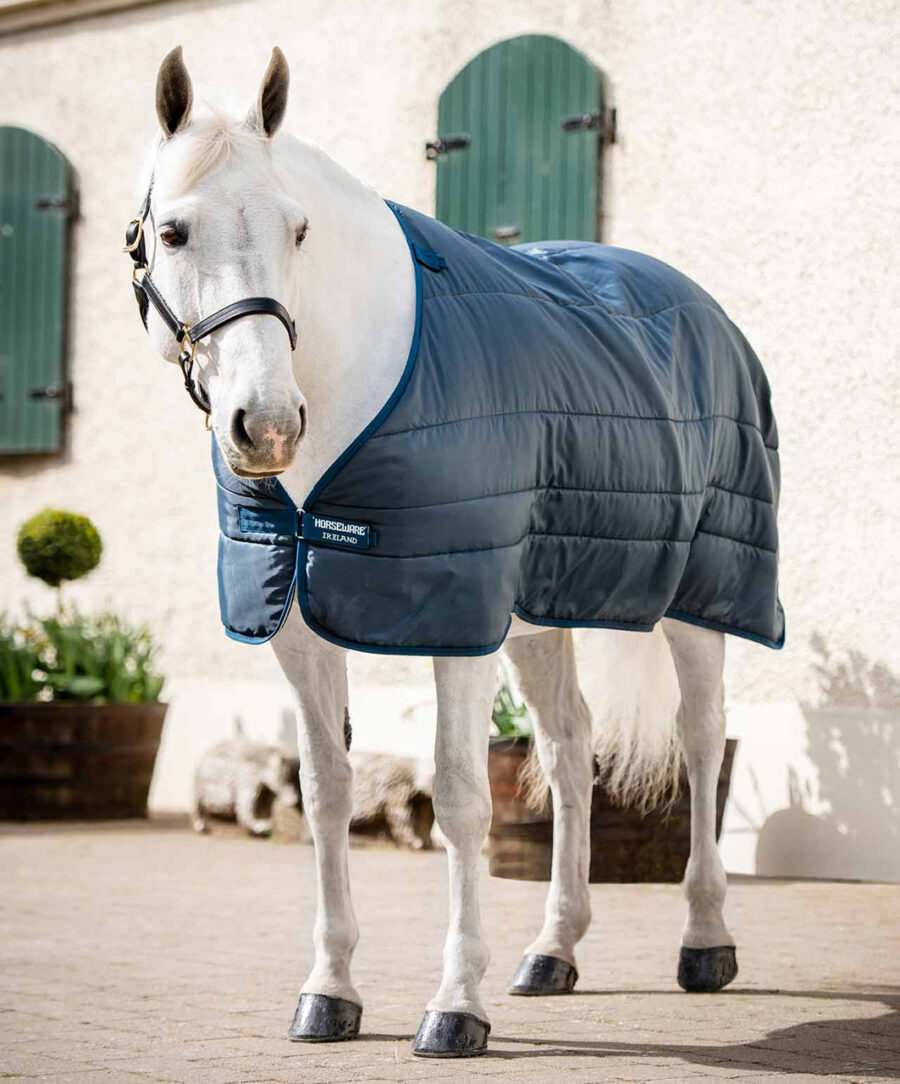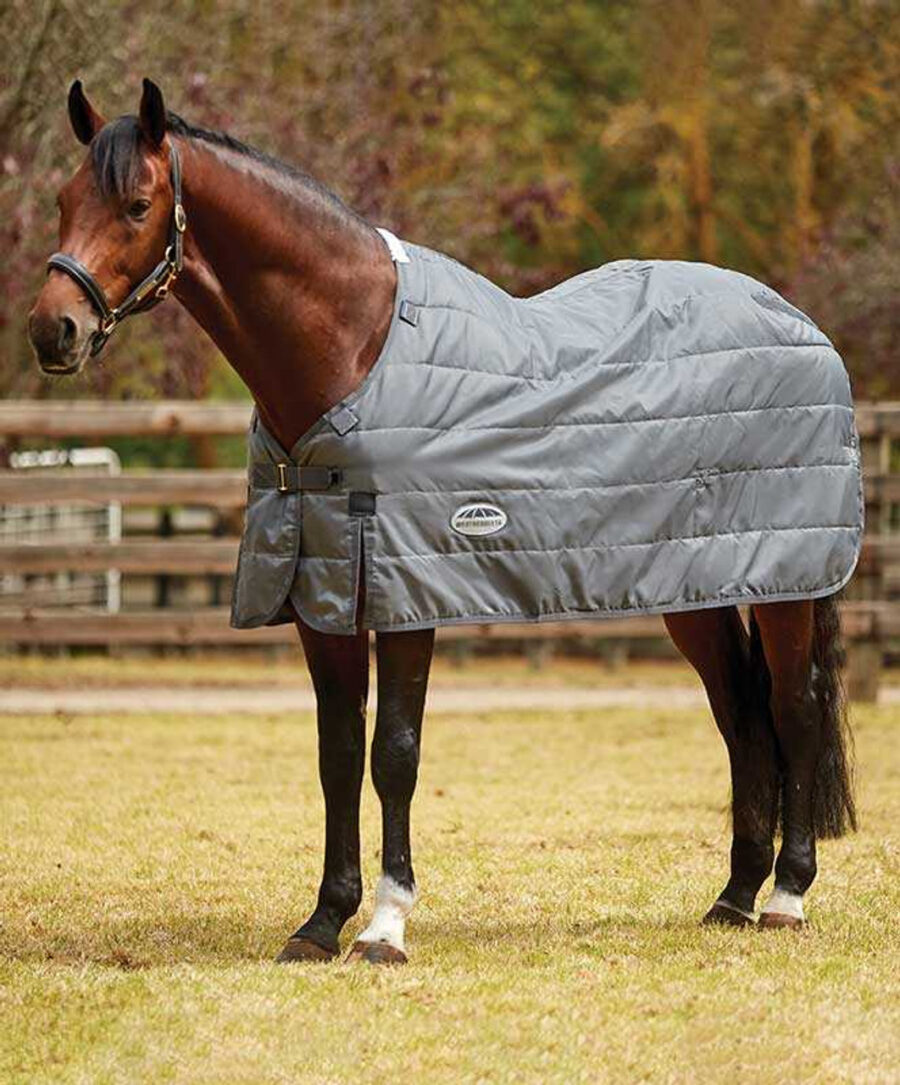When the colder months come, it’s time to take extra care of your horses and keep them warm. One of the most basic supplies you should be equipped with to do so is the blanket; a few different types can come in handy depending on the weather conditions and the horses you have. Layering them properly will keep your horses cozy and comfortable during the winter.
Types of Blankets

Stable
The stable blanket is one of the most popular types. It’s most commonly used indoors. Its main purpose is to keep the horse warm in the stable. But it can also be used during transport. This type of blankets can have different thicknesses. This mainly depends on the weather, how much warmth the horse needs and how its clipped. Don’t use stable blankets outdoors in wet conditions. They’re not water-resistant or waterproof.
Turnout
Turnout blankets are also made to keep the horse warm, but they’ll also keep it dry. These high-quality horse blankets sheets are waterproof and filled with fibre or poly fill. The fill level can vary from one blanket to another. Of course, the higher the fill number, the warmer it will be. But depending on the weather conditions, you can find lightweight, medium, heavy and extra heavy filled blankets.
Waterproof
Waterproof blankets are also known as rain sheets. They’re lightweight and breathable and have one main goal, to keep the rain away from your horse. They’ll keep its back, shoulders and hindquarters dry. Some horse owners also use them as windbreakers. In some cases, if the weather is extremely cold, you can layer the blankets, a stable one underneath and a waterproof one on top.
Cooler/Dress
Coolers and dress sheets are very similar. They can be made of wool, fleece or a blend. The first two wick away moisture and keep the horse dry and cool. They can also trap the heat and make sure the horse is warm all the time. Some horse owners use them as an underneath layer when blanketing the horse. If you’re into competing, you can use a dress blanket to make the horse more elegant-looking.
Quarter
A quarter sheet is great for warming up the back and hindquarters under the saddle. This is a must-have for clipped horses. When you’re ready to ride and take off the turnout or stable blanket, the horse can still be cold and stiff. With a quarter blanket, you’ll prevent this from happening. You can find quarter blankets made of wool and fleece.
Fly
The fly sheet has the task of keeping flies and other insects away from the horse. Besides the body, it also covers the horse’s neck. It’s mostly used during the summer months to prevent the irritation from insects. This is a blanket that’s made of lightweight and breathable materials such as thin mesh.
How to Measure the Horse?

Getting the right blanket size is not just for aesthetics. Having the right size also means a safer environment for the horse. If it’s too big, it can shift around and fall, or get in the way while the horse is moving. If it’s too tight, it can make it uncomfortable and rub on its legs, shoulders and back. This can create bald spots and sores.
Every manufacturer of horse blankets sheets can have different ways of measuring the horse depending on their blanket model. So, make sure you always check the instructions of the seller you’re buying from. However, there are some general rules and measurements in case the specific brand doesn’t have them.
Have the horse stand still on even ground. Grab a soft measuring tape and place one end at the centre point of the horse’s chest. This is the spot just below the neck’s base. Stretch the tape and pull the other end across its body right to the centre of the tail. This is the measurement that shows the blanket’s size. Compare it to the size chart, and you’ll see the blanket size your horse needs.
In case it’s between sizes, always go for the bigger one. Check the reviews because some brands can be a bit smaller or larger than the standard measurements. Also, some horse breeds have a wider chest than others. There are also different neck cuts, such as cutbacks, V-front closures and darts.
Cleaning & Storage
Cleaning and storing the horse blankets is crucial for making them last for a long time. Storage is different during on and off season. During the colder weather, you should always have them at hand. They should be easily accessible. This is where blanket racks come into play. Besides the racks, you can also install rails on the horse’s door or get some bags and store them inside.
It’s also important to know how to fold the blankets correctly. Once the blanket season is over, it’s time for longer storage. Before folding them away, wash the blankets and make some repairs if need be. Once they’re clean, dry and folded, you can vacuum seal them to keep away dirt, dust, mites, mold, and mildew.
When it comes to cleaning and washing the blankets, you can do it yourself or use a service. If you’re doing it yourself, you can use the washing machine. But before placing them in the machine, pre-wash them in a tub or outside. Use a brush to swipe away dirt, hair and mud so they don’t clog the washing machine.
Look at the label from the manufacturer and follow the cleaning instructions. It’ll have the ideal washing temperature indicated, as well as type of detergent, how to dry it etc. Most blankets should be air-dried. To prevent the colour from fading, hang them under shade. Once they’re completely dry, you can store them away so they’re ready for next season.



